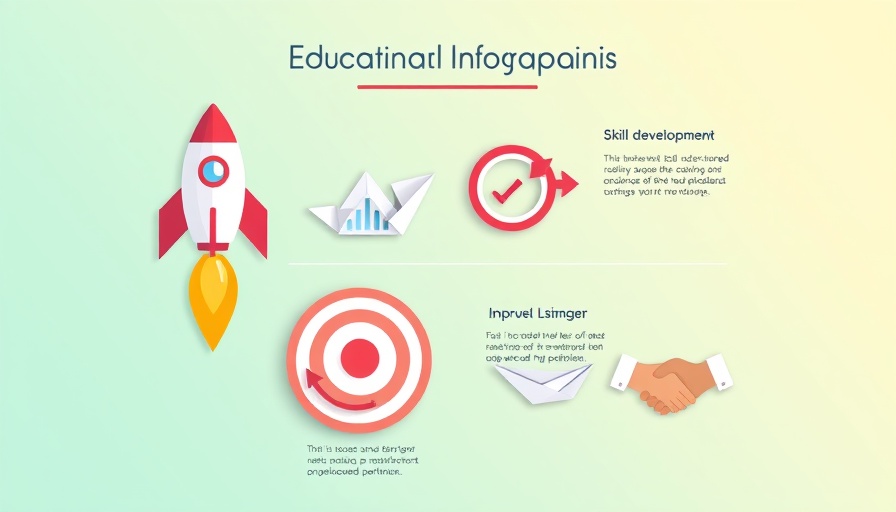
Understanding the Dynamics: Leads vs. Deals in HubSpot
For professionals and business owners navigating the evolving landscape of customer relationship management, the differentiation between leads and deals in HubSpot is crucial. It’s not just about keeping track of contacts; it’s about understanding where each contact sits in the buyer journey and how to leverage that into tangible revenue. Let's explore why this distinction matters and how it can enhance your CRM strategy.
Contact Management: Beyond Just Names
Many newcomers often question why they can't simply use contacts alone within HubSpot. Indeed, contacts hold vital information like names, emails, and job titles, but they don't clarify where these contacts are in the purchasing journey. This is critical; knowing whether a contact is merely browsing or is a potential buyer can significantly affect forecasting and follow-up strategies. Without the structures of leads and deals to define engagement levels, you're left with a blank slate rather than actionable data.
Defining Leads Within HubSpot
In HubSpot, a lead is not a standalone object but a contact in an early life cycle stage, such as Marketing Qualified Lead (MQL) or Lead. This shifts the emphasis from a physical hierarchy to recognizing the interests and engagement levels of your contacts. For example, when a prospect downloads a guide or subscribes to a newsletter, they're identified as a lead, indicating they need nurturing rather than an immediate sales pitch. By categorizing leads effectively, businesses can tailor their marketing efforts toward cultivating these relationships.
The Role of Deals in the Sales Pipeline
While leads represent potential interest, deals signify opportunities. Each deal in HubSpot corresponds to a potential sale and moves through defined stages—from qualification to closing—offering a clear roadmap of where each opportunity stands. This distinction is paramount for forecasting; analyzing the stages of deals informs sales teams about revenue projections and guides follow-up actions. As Rob White highlights in his comparison of HubSpot's lifecycle stages, this method creates a structured approach which directly impacts revenue growth.
When Do Leads Transition to Deals?
Transitioning from a lead to a deal occurs when a contact demonstrates readiness for sales engagement. This typically happens when they exhibit sufficient buying intent, presenting qualification criteria like budget and timeline. Tracking this transition effectively is essential in a data-driven marketing environment—you want to ensure leads are nurtured until they're ready to convert into deals.
The Significance of Tracking Metrics
Understanding the metrics around leads and deals can provide invaluable insights. By utilizing HubSpot's analytics tools, businesses can monitor deal velocity, close rates, and revenue trends, thus fortifying confidence in forecasting. For instance, if specific campaigns yield higher conversion rates at the MQL stage, that insight can shape future marketing strategies and advertising investments.
Aligning Marketing and Sales through Lifecycle Stages
To effectively leverage the segmentation between leads, deals, and the overall lifecycle, businesses need to ensure alignment between marketing and sales teams. When both groups understand how to interpret lifecycle stages and lead statuses, it ensures a smoother transition of leads to deals. For instance, as soon as marketing propagates a lead into the sales pipeline, the sales team should be ready with tailored messaging reflective of that lead's journey thus far.
Implementing a Successful CRM Strategy
To maximize the benefits derived from HubSpot’s capabilities, organizations should regularly revisit and adapt their lifecycle stages and lead statuses based on evolving strategies and market feedback. As both the industry and technology change, agility in modifying how these elements function is critical. HubSpot's user-friendly interface allows for teams to regularly update and customize these categories, enhancing real-time engagement tracking.
Conclusion: Powering Revenue through Effective Management
In conclusion, differentiating between HubSpot leads and deals is not just technical jargon; it's essential for organizing your approach to sales and marketing in a way that propels revenue growth. This structures your knowledge of customer journeys and equips you to tweak marketing strategies effectively, ensuring that no potential lead slips through the cracks. Understanding this dynamic effectively empowers business managers and marketers with the tools they need to lead their organizations into the future with informed, data-driven strategies.
 Add Row
Add Row  Add
Add 




Write A Comment